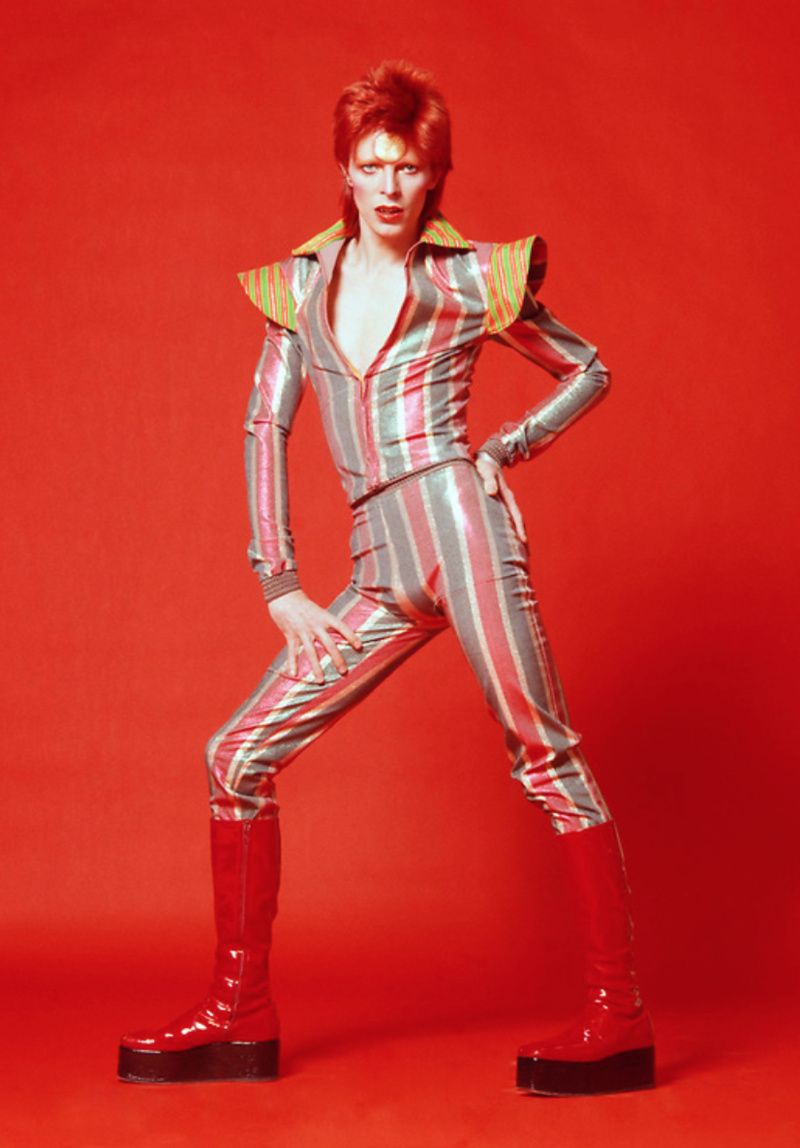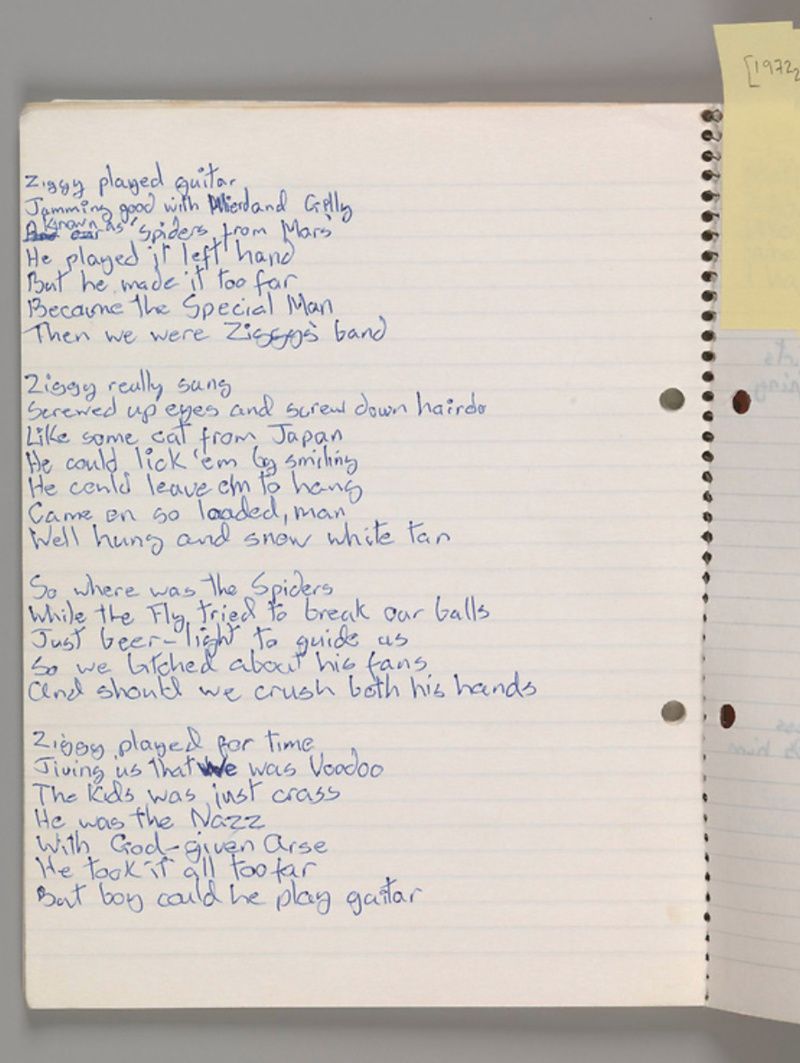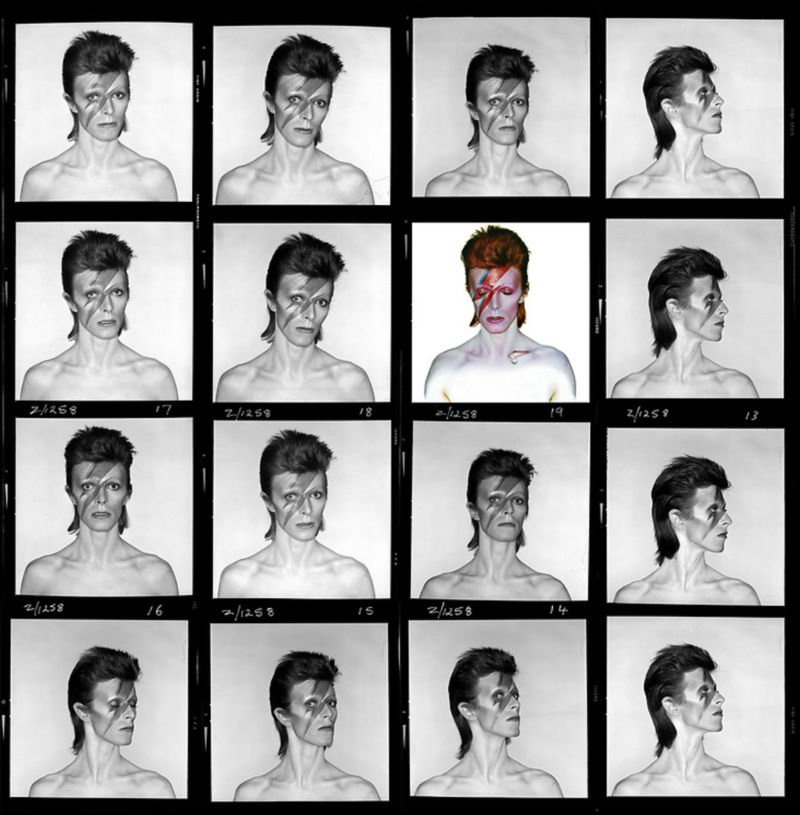Last Chance to Catch NYC's Holiday Notalgia Train
We met the voices of the NYC subway on our nostalgia ride this weekend!


The traveling exhibit David Bowie Is, currently located at the Brooklyn Museum, is a tour de force that explores the life and influences of Bowie through an extraordinary collection of items predominantly from the David Bowie Archive. Iconic costumes, personal diaries, photographs, sketches, instruments, film, and more come together visually, while audio — Bowie’s songs, voice recordings of Bowie talking about himself, audio from projected films — is played over the headphones you wear, coordinated with the exhibit as you walk through.
David Bowie Is opens with context on Bowie’s life growing up in south London and the suburbs around the city, and his first ventures into the avant- garde scene in London. Then, we witness his first steps into the limelight, transforming from David Jones to David Bowie by 1965. Much of the initial part of the exhibition emphasizes Bowie’s sense of isolation and expansive imagination, which began in childhood. “I was a kid that loved being in my room reading books and entertaining ideas. I lived a lot in my imagination. It was a real effort to become a social animal,” he said in 2002.
The first photographs of earth from space in the late ’60s and the Apollo 11 moon landing inspired Bowie’s first national UK hit, “Space Oddity” (itself a pun on 2001: Space Odyssey by Stanley Kubrick) as well as one of his first song characters, Major Tom. Henceforth, Bowie would create song characters and often perform them on stage.

Print after a self-portrait by David Bowie, 1978. Courtesy of The David Bowie Archive. Image © Victoria and Albert Museum
Under the dome of the Brooklyn Museum, the exhibition focuses on Bowie’s arrival on the national and international stage with his performance of “Starman” on BBC’s Top of the Pops in July 1972 wearing red boots, an extreme “ultra-violent” quilted suit of Liberty print fabrics, and sporting red hair. As the exhibition contends, “through his experimentation, through his questioning of gender and social norms, Bowie became a glamorous pioneer of invented identities.” The costume itself is shown in front of footage from the show, while the song plays over headphones. English DJ Marc Riley claims that this performance “was a pivotal moment in British musical history.”

Original lyrics for “Ziggy Stardust,” by David Bowie, 1972. Courtesy of The David Bowie Archive. Image © Victoria and Albert Museum
Around the corner, the exhibition further explores Bowie’s influences from art, architecture, literature, fashion, and more, and emphasizes the cross-genre creativity in the artist’s career. In the ’60s and ’70s, Bowie was directing original films, designing film sets, adapting books for the stage, and starring in musicals and plays. He was such an avid reader that his flight case (which he called a traveling library) would be packed with books, sometimes numbering more than 400, as well as his wardrobe. Bowie’s flight case, which is displayed at the exhibit, contains his top 100 books, which he had selected for the original exhibition at the Victoria & Albert Museum in London.
Elements that inspired the Ziggy Stardust costumes, the appliquéd Kansai Yamamoto cloak and the Man Who Sold the World costumes, are shown here too, showing his long history of collaborations with other creatives throughout his career. Bowie was also designing the stage for his tours. The elaborate set for Bowie’s Diamond Dogs tour cost $250,000 and 35 people a day to build at each venue.

Aladdin Sane contact sheet, 1973. Photo Duffy © Duffy Archive & The David Bowie Archive
Another section of the exhibition explores Bowie’s deliberate departure from the authenticity favored by rock and roll personas, and the promulgation of a new cognizance that on stage and off stage personas could be blurred. Bowie was more than willing to dive into a full-on transformation involving stae makeup, glitter, and hair dye “to create an overtly provocative spectacle.” He added to and embraced the celebrity-obsessed culture of the 1970s.
The next rooms explore Bowie’s use of the music video to continue his role as provocateur, as well as his film performances, which number more than twenty (not counting television roles). The last room, which features three walls of video projection as well as more costumes, explores Bowie’s life in New York City, which he made his permanent residence in 1992.
The final section of the exhibition offers David Bowie, finally, as himself in a curated series of photographs. Bowie died on January 10, 2016 and the exhibit closes with his final album Blackstar and the “phenomenal global outpouring of grief” that took place following his passing. The exhibit concludes with a quote adapted by Bowie’s record label in the 1970s: “There’s old music, there’s new music, and there’s David Bowie.”
You can get advance, timed tickets to David Bowie Is from the Brooklyn Museum. Check out the programming connected to the exhibition, including a Little Cinema presentation of the film Basquiat, starring Bowie as Andy Warhol.
Next, check out 5 Iconic David Bowie Moments and Places.
Subscribe to our newsletter